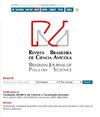自闭症谱系障碍儿童的辅助技术,经历压力和焦虑
IF 1.1
4区 农林科学
Q3 AGRICULTURE, DAIRY & ANIMAL SCIENCE
引用次数: 1
摘要
随着当前技术的发展以及工业4.0利用信息通信技术、物联网、智能系统和产品等带来的影响,辅助技术(AT)已成为许多残疾人日常生活中重要而不可或缺的一部分。自闭症谱系障碍(ASD)是一种特殊类型的障碍,可以从它的使用中受益匪浅。本研究的目的是收集辅助技术的数据,旨在检测、预防和改善焦虑和压力(这是一种已被证明存在的特征,并在ASD患者中以各种方式表达)。在引言部分,对应激和ASD的神经生物学基本定义进行了分析。在主要部分,压力和焦虑与ASD之间的相关性,以及AT设备在ASD儿童和青少年中用于焦虑和压力的描述和记录。辅助设备和装置分为两大类,1)低技术和2)中高技术。研究结果表明,在使用辅助设备来对抗压力和焦虑方面存在显著的研究差距,许多有前途的选择(特别是在中高技术领域)很难成为一种简单而经济的解决方案,将它们融入ASD患者的日常生活。本文章由计算机程序翻译,如有差异,请以英文原文为准。
Assistive technology for autism spectrum disorder children that experiences stress and anxiety
With the development of current technology and influences that have been made by the Industry 4.0 utilizing ICTs, IoT, smart systems and products and many others, Assistive Technology (AT) is an important and integral part of the daily life of many people who experience disabilities. Autism Spectrum Disorder (ASD) is a special category of disorder that can greatly benefit from its use. The purpose of this research is to collect data of Assistive Technology aimed at the detection, prevention and improvement of anxiety and stress (a characteristic of which has been proven to exist and is expressed in various ways in people with ASD). In the introduction, basic definitions regarding the neurobiology of stress and ASD are analyzed. In the main part AT, stress and anxiety correlations are made with ASD and AT devices are described and documented regarding their use for anxiety and stress in children and adolescents with ASD. The Assistive equipment and devices are divided into 2 main categories, 1) Low-tech and 2) Mid-High tech. The results of the research reveal a significant research gap in the use of AT to combat stress and anxiety and the difficulty of many promising options (especially in the domain of Mid-High tech) to be an easy and economical solution in integrating them into the daily life of people with ASD.
求助全文
通过发布文献求助,成功后即可免费获取论文全文。
去求助
来源期刊

Brazilian Journal of Poultry Science
农林科学-奶制品与动物科学
CiteScore
1.80
自引率
9.10%
发文量
60
审稿时长
>12 weeks
期刊介绍:
A Revista Brasileira de Ciência Avícola surgiu em 1999 a partir da necessidade que a comunidade científica possuía de um periódico para veiculação e publicação de seus trabalhos, com a publicação de três números anuais.
A Revista conta hoje com um corpo editorial altamente qualificado e com artigos científicos desenvolvidos pelos maiores especialistas da área, o que a cada dia atrai mais leitores em busca de inovação e respaldo técnico.
Devido à credibilidade que conquistou pelos esforços de sus autores, relatores e revisores, a Revista ganhou caráter de coleção, sendo consultada como fonte segura de estudo desenvolvidos na Avicultura.
A partir de 2003 – volume 5 -, a Revista passou a chamar-se Brazilian Journal of Poultry Science, e todos os trabalhos passaram a ser publicados em inglês. No mesmo ano subiu para quatro o número de revistas por volume, ampliando-se assim os trabalhos publicados anualmente.
 求助内容:
求助内容: 应助结果提醒方式:
应助结果提醒方式:


